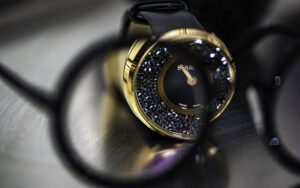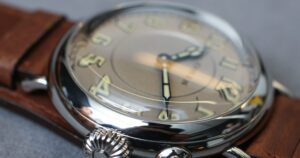Watches tell the time, some of them look fancy, others look sporty. There’s not much more to tell, right? Watches are watches are watches?
Well, not exactly. Most strap to your wrist while some hang from a chain in your pocket. Some run by battery while others move by spring. Some have stopwatches while others don’t. Some are smart while others aren’t. And that’s only the tip of the iceberg. See where we’re going here? There’s a lot more to watches than face value.

If you’re looking to buy a watch this holiday season—either for yourself or someone else—you could get positively bogged down by all of the options out there. In the interest of simplifying this, we’re going to break watches out by different categories so that you can get a better idea of what’s out there and which watches will suit you best. Here we go…
Dials
The face of the watch—referred to as its “dial”—is likely the first thing you see. It’s often the first part you want to see because when you’re buying a watch, you want it to look like something you’d be proud to wear.
Analog
This is the traditional. It’s the one with the numbers one through 12 going around a circle, with an hour hand, a minute hand, sometimes a second hand to tell the time.
Digital
Digital watches show the time in numerals, not by hands on a dial. Digital watches are often electronic, but they don’t have to be. “Digital” simply refers to the number display, not the power mechanism behind those numbers.
Tactile
Rather rare compared to the others, tactile watches don’t really show the time. They let you feel the time. Literally. They are often used by the blind so they can tell the time too.
Smart
These are the touchscreen watches. They have apps, time, can tell heart rate, help you find your phone, etc. Overall, they are very versatile.
Power
Another way to tell the differences between watches is what powers them. There are only a few different types, and chances are, you’ve heard of most of them.
Mechanical
When people picture the insides of a watch with mainsprings, balance wheels and gear trains, they’re picturing a mechanical watch. These are the ones that are powered by springs and gears in constant motion. To keep these ones going, you have to wind them up regularly, whether it’s once a day or once a week.
There are several types of mechanical watches that are automatic. These are also made up of gears; however, instead of winding these yourself, your natural movements from walking and other regular arm movements charge your watch.
Quartz
These are perhaps the most common types of watches out there. They are also commonly called electronic watches. Powered by a quartz crystal, they are accurate, cheap and fairly durable.
There’s no need to wind these watches, but your watch will need a new battery from time to time.
Others
There are several other types of watches, too. For example, some watches are solar-powered and some are hybrids of automatic and quartz.
Utility
Some watches have more purpose than just telling you the time. And we don’t mean those James Bond ones that are secretly bombs or have grappling hooks, lasers or any other fancy gadget. We mean things that are real!
Diving
Some watches are made for the purpose of handling water. Their crowns (the part you wind the time with) are made so that they do not just open when under water. They also often have a rotatable bezel (the ring keeping the glass face in) to help time how much oxygen the diver has left.
Different diving watches have different depths they’re suitable for, so if you plan on getting one of these, make sure you know what depths you want to go to and get one suitable to this threshold.
Fitness
Some fitness watches are also smart watches, but not all of them are. These watches are made to monitor your heart rate, how many miles you’ve run, and how many calories you’ve burned. Some can measure your location with GPS, sleep patterns, etc.
Chronograph
Chronograph is a fancy way to say stopwatch. Many watches come with one. These watches often have an extra, smaller dial that shows the stopwatch, along with two buttons to start and stop it.
Pilot
As is implied by the name, these watches were originally made for pilots. They were made to be easily read, so they have bigger numbers on the dial and glowing hands. Some will even show the altitude.
Tactical
Going by many names like military, rugged and tactical, these watches are made for pain. They’re built to handle things like mud, water, sand, dirt. In short, these watches are built for an extreme lifestyle.
Style
If your purpose for a watch is to look good, then there are styles for you.
Luxury
These are for the status. These are for the name. These are for when you want to feel rich and look it. Many of these luxury watches come from name brands like Armani, others come from watch companies that are a couple hundred years old.
Dress
When you want a watch that will look good with anything, whether it be a job interview, going out on the town or just heading to the grocery store, these take the “simple, yet elegant” approach to fashion.
Fun
These are the watches with a picture of Mickey Mouse or with NCC-1701 USS Enterprise as the second hand. They’re made for fun, not just telling the time.
As you can see, there are watches for every occasion and for the needs of every wearer. So, if you want to buy that perfect gift, we hope this gives you a useful starting place. And if you’ve got an old watch languishing in a drawer that you want to coax back to life this holiday, let us help you. Whether you need a watch repair or battery replacement, Times Ticking has you covered.



